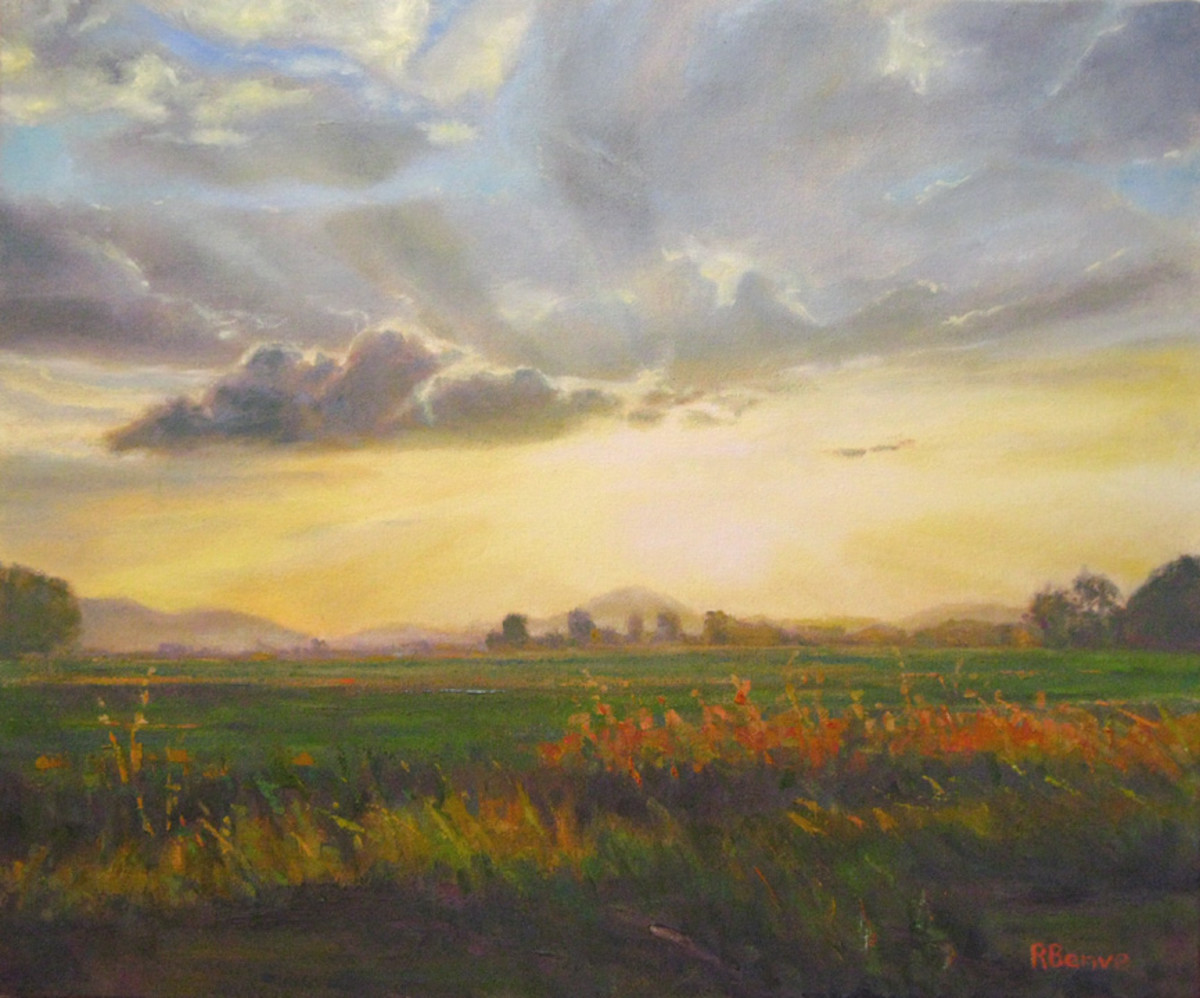
Aerial perspective how to#
How to use this concept to make better paintings? So if we remember that this effect has four basic influences on elements in our painting things appear cooler, lighter, duller and softer as they recede to the horizon. Red – will take on lavender –Purple mountains majestyīlue – will stay blue hue least effected will lighten in value. Yellow – first to lose intensity and value Let’s see what effect aerial perspective will have on the ribbons. I’m going to take the ribbons and roll them all the way to the horizon. Let’s pretend that I have three rolls of ribbon. Leonardo Da Vinci was one of the first artists to use this powerful tool in his work.įrom a painters perspective we want to consider the effect aerial perspective has on local color. Aerial perspective, also sometimes referred to as atmospheric perspective, supplies painters with a means to create a sense of mystery, intrigue and enchantment in their work. Carlson described atmospheric perspective as the third dimension of painting – The primary means of creating a sense of space and air in an otherwise two dimensional picture the expression of space by changes in gradations and distinctness in hue. I am a landscape painter so I focused on the landscape here, but even in still life painting, aerial perspective comes into play, although it is much more subtle.Artist John F. As you increase the distance between you and an object, the dense atmosphere between you. At the horizon of the sky, I often use blues that have more yellow in them than I use as the arc of the sky goes toward the zenith. Atmospheric perspective takes into account the density of the air. I apply it very lightly so I am slightly altering the existing color but not heavy enough to replace the color. I often use a scumbling of pale violet over my ground color to show a path or meadow in the far distance.

Clouds closer to us appear to be cool in color compared to those in the far distance. Clouds in the distance approaching the horizon appear warmer, more rosy, not cooler as the ground receding appears. Even in a narrow strip of sky, it is best to show a hint of this arc of the sky by painting the sky at the zenith darker and more intense than it is at the horizon.Ĭlouds, however, show the reverse of the land’s aerial perspective. Looking up, at the zenith of the sky, the color is darker and more intense because it is closer and you look through less atmosphere. The sky at the horizon is lighter in color because you are looking through more atmosphere. At the horizon, the sky is furthest from you and as you look upward, the sky and the clouds are closer to you. In the case of low humidity or when working from photographs, it’s best to manipulate the intensity and value of the color of what is seen in order to convincingly portray distance.Īs you stand looking out at the landscape, the sky is an arc that follows the curve of the earth. But an artist must still understand it in order to depict space on their paper or canvas. In southwestern United States, with the humidity often below 20 per cent or even in single digits, aerial perspective is harder to see. In order to show the space, make the path slightly lighter, grayer or less intense of a color. A photograph will show the same value and intensity of color on a path in the foreground as it does as the path recedes into the mid-ground. This especially happens when using photographs as reference material because the camera’s eye averages the darks and lights. These locations have a visible haze which makes it easy to see objects like trees become lighter, grayer and bluer.Ī problem beginning artists often run into when painting landscapes is painting dark objects too dark without taking into account aerial perspective. When painting landscapes in humid or smog areas, aerial perspective is easy to see. Stated simply, as objects recede, they appear lighter, grayer or less color saturated, smaller, with less contrast and less detail than they appear at a closer distance. Sometimes called atmospheric perspective, it depicts the changes in the atmosphere as it goes back into the distance. That’s where aerial perspective comes in. It’s a challenge to depict three dimensional space on a flat two dimensional surface.

UART Tip #06: Aerial Perspective with Lee McVey


 0 kommentar(er)
0 kommentar(er)
